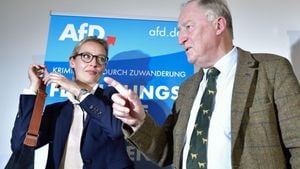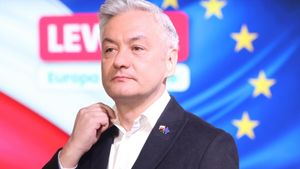Support for the Ukrainian armed forces is at a pivotal moment, as European nations weigh their contributions against the backdrop of the three-year conflict with Russia. Recent statements from Polish Foreign Minister Radoslaw Sikorski shed light on Ukraine's current military capabilities and the joint efforts with European allies.
During an interview with CNN on February 23, 2025, Sikorski highlighted the remarkable progress of Ukraine's military forces, noting, "Ukraine can fight on its own until the end of the year with just support from Europe, and I think President Vladimir Putin has to take this seriously." This statement reflects both confidence and determination by the Polish government, emphasizing the importance of continued European assistance.
Over the past three years, Ukraine has significantly bolstered its military strength, operating 110 brigades. Sikorski elaborated on this development, stating, "If three years ago anyone asked me where Ukraine and Russia would be after three years of this war, I don’t think anyone could guess Russia would control only 20% of Ukraine's territory." The improved military position of Ukraine stands as evidence of its resilience and adaptability against the aggression of Russian forces.
Reflections on historical commitments were also made, as Sikorski brought attention to the Budapest Memorandum of 1994, which promised security guarantees to Ukraine upon the nation's relinquishment of its nuclear arsenal. Unfortunately, Sikorski pointed out, "These guarantees were not fulfilled," emphasizing the need for new security guarantees from NATO and the European Union.
The conversation also touched upon the financial aspects of military aid. The United States has emerged as the largest provider of support, tallying up to $175 billion over the course of the conflict, with $106 billion reaching Ukraine directly. This support encompasses military aid and other forms of financial assistance but has faced scrutiny due to political debate back home.
Europe closely follows suit with significant contributions of its own, amassing $49.4 billion aimed at military aid over the past three years. Enhanced training programs have also resulted in approximately 70,000 Ukrainian soldiers receiving necessary skills to meet battle demands. Kaja Kallas, the European Union's High Representative for Security and Foreign Policy, expressed the EU's readiness to take the lead on military support should American enthusiasm wane.
Despite the cohesive support from allies, challenges remain on the battlefield. The prolonged conflict has pushed Ukraine to rapidly innovate, with plans to ramp up drone production from 1.5 million to 4.5 million units within the year. This ambitious endeavor showcases Ukraine's strategic shift and adaptability.
Sikorski concluded the conversation with poignant remarks on the importance of establishing solid peace agreements. "The best security guarantee for Ukraine is its army of nearly one million people," he stated, addressing concerns about long-term security and stability.
Reflections on the state of the war indicate uncertainty, but Ukraine’s perspective remains resilient. Given local successes and international support, Ukraine continues to assert its right to defend itself.
This topic surrounding the support for Ukrainian armed forces opens up broader discussions on future European commitments, NATO's role, and the stability of security guarantees. The complexity of these relationships will be pivotal as the conflict evolves, urging nations to reconsider their long-standing agreements and promises.
Meanwhile, as negotiations persist and efforts to settle the conflict continue, both sides remain entrenched, with no clear end to the conflict. The international community's engagement will be tested as the urgency for resolution becomes apparent.



